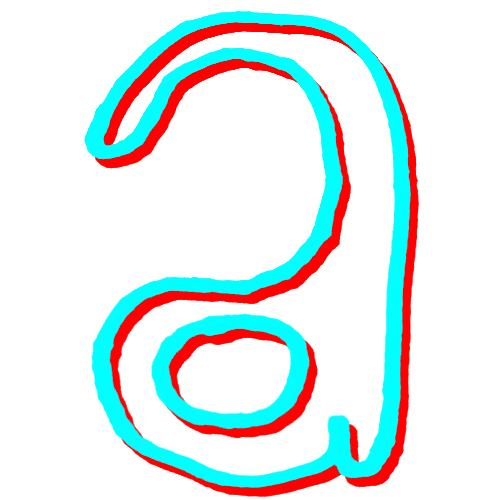On Vijay Seshadri’s “The Disappearances”
“The Disappearances” is a poem haunted as much by its subjects of loss and vacancy as by the voices of poets long dead—Seshadri begins with the concluding line of Wallace Stevens’ “The Man on the Dump” [1] : "Where was it one first heard of the truth?" (line 1). “The Disappearances” can be read as a continuation, or variation, on the attempt to answer that question. There is a sense of the absurd about both poems: Stevens’ philosopher among garbage, Seshadri’s unsubtle hints at a UFO: “oblong and illustrious above / the dispeopled bedroom community, / venting the memories of those it took” (lines 23-25). In fact, Seshadri originally intended to title his poem “Flying Saucer”; his ultimate decision against it represented a shift in focus that allowed “The Disappearances” to be that much more openly historical. [2]
Because it is concerned with the historical, even as it touches the universal. This poem, written specifically about the JFK assassination and the imagined event of a mass alien kidnapping, gained new resonance in the wake of 9/11, when The New Yorker published it in early October 2001 [3]. It gave voice to a sense of devastation in the American public consciousness, a restructuring of mind and sense of self. Perhaps Seshadri intended his poem to have such an intertragic transference—he also includes a line from Emily Dickinson’s “After great pain, a formal feeling comes,” [4] itself a poem written during the anguish of the Civil War. The reference follows almost immediately after the Stevens line, as if an answer to the question posed. Seshadri, in Stevens’ voice, asks: “Where was it one first heard of the truth?” Then, in Dickinson’s he responds: “yesterday, or centuries before” (line 2).
Yes, the poem is aware of the universality of suffering. The truth is suffering, but “The Disappearances” is not a trite catch-all, wielding a general pathos as its main device: it is a poem rooted in a context of American disaster, from its references—really, are there poets more indelibly inscribed into the American canon than Stevens and Dickinson?—to the very manner in which it represents tragedy at scale. Here, tragedy is a haunting, in that it has as much physical, tangible presence as a ghost:
The wheels of the upside-down tricycle are spinning.
The swings are empty but swinging.
And the shadow is still there, and there
is the object that made it. (lines 18-21)
Lurking in the poem is a pervasive sense of something unsaid, of an avoidance, a pulling-away. It is a response to tragedy that Seshadri has worked to capture: a dissociation from tragedy itself.
Seshadri’s phrasing is exact and scientific, from the street, which is “long and true as a theorem,” to the “phosphorescent” humans, the “proximate atmosphere,” the “dispeopled bedroom community.” His language seems to reject lyricism. Its cold detachment and precision enforces a distance between the reader and the poem, and likewise between subject and sorrow. A calamity of incredible proportions, for which there is no warning, is reduced simply to a list of images. It is the only way to capture the breadth of the devastation. The lack of grief or surprise or outrage calls to mind the desensitized crisis reporting characteristic of many mainstream publications, when tragedy exceeds emotional response. This separation of reality and being, of event and feeling, comes to a head in the last several lines of the poem:
This is you as seen by them, and them as seen by you,
and you as seen by you, in five dimensions,
in seven, in three again, then two,
then reduced to a dimensionless point
in a universe where the only constant is the speed of light.
This is you at the speed of light. (lines 48-53)
The JFK assassination is to Seshadri’s younger self a call to consciousness, a cleaving of his understanding, touched by the clarity that only such shock can bring. Suddenly he is out of his own body; he is not the witness of the tragedy, but the watcher of the witness. He is not himself; he is both present and absent. The use of second-person enforces this sense of tertiary witnessing. “This is you,” the narrator repeats—if we continue to believe this is Seshadri’s voice, it is an affirmation of his existence, a call back to his body. Each repetition of ‘you’ is an effort to bridge that distance.
Seshadri’s chosen references reinforce this sense of alienation. Stevens’ parentheticals emphasize the difference between the being and the image, sensation and perception:
Everything is shed; and the moon comes up as the moon
(All its images are in the dump) and you see
As a man (not like an image of a man),
You see the moon rise in the empty sky.
Dissociation as a theme preoccupies Seshadri in a broader context. In conversation with Peter Mishler for Lit Hub, he discusses what he refers to as “the question of being”:
From the time I was eight or nine, I’ve always been alive—sometimes almost to the exclusion of everything else—to the contingency of the world, to its accidental quality, the mystery of its presence…Why ARE we? And why are we we? What are these bodies, these faces all about? [5]
It is clear these sentiments inform the expanded perspectives captured in “The Disappearances.” You can imagine an eight or nine-year-old boy seeing the television, seeing himself seeing, and so on. This lightning strike of self-awareness, an extension of the theory of mind, seems to be a childhood occurrence that forever alters our perception of the world, often in the wake of traumatic events. It is no surprise, then, that Seshadri names Elizabeth Bishop’s “In the Waiting Room” as a source of inspiration a little later in the interview. This poem is a masterclass in surreality within one space. It opens with a mundane scenario in which a young Bishop and her aunt attend a dentist’s appointment, and her aunt’s small cry of pain sends Bishop into a similar crisis of being and existence as Seshadri describes. Suddenly she is not herself; she is her aunt in the dentist’s chair; she is in the National Geographic issue she was reading:
I said to myself: three days
and you'll be seven years old.
I was saying it to stop
the sensation of falling off
the round, turning world.
into cold, blue-black space.
But I felt: you are an I,
you are an Elizabeth,
you are one of them.
Why should you be one, too? [6]
Bishop reminds herself of her age, her name, the boundaries that delineate what makes her her and thus separate from everything else. It is very similar to the call Seshadri makes to himself: “This is you.” Suddenly Bishop is unaware and unconvinced of any other truth besides that she is not herself; in looking for what she is now, she sees “shadowy gray knees,/ trousers and skirts and boots/ and different pairs of hands,” all of which are foreign to her. It is as though she has been struck out of herself—now she is seeing as Seshadri did, seeing herself seeing, a third party to herself. It is a similar severance and estrangement as recognized in Seshadri’s poem in his own context: “[e]very creature, intelligent or not, has disappeared” (line 12).
Dissociation and the absence it creates lends “The Disappearances” a particular gravity that transcends time and, increasingly, scale of comprehension. Perhaps Seshadri’s poem about a mass UFO kidnapping and the death of a president is not exclusively about either of these things. Rather, it is defined more by the perceptive space it holds and the distance it creates from what is, and what is understood, than what it states explicitly. Seshadri understands that to bear witness to tragedy, you must bear witness to its context. You must be more, see more, than yourself.
Notes
[1] Wallace Stevens. The Collected Poems of Wallace Stevens. New York, NY: Alfred A.
Knopf, 1990.
[2] Vijay Seshadri. “The Disappearances.” The New Yorker, October 1, 2001. https://www.newyorker.com/magazine/2001/10/08/the-disappearances.
[3] ibid
[4] Emily Dickinson and Ralph W. Franklin. The Poems of Emily Dickinson. Cambridge,
Mass: Belknap Press of Harvard University Press, 1998.
[5] Peter Mishler. “Poet Vijay Seshadri on
Loss and Writing as Therapy.” Interview. Literary Hub, November 7, 2020.
https://lithub.com/poet-vijay-seshadri-on-loss-and-writing-as-therapy/.
[6] Elizabeth Bishop. The Complete Poems: 1927-1979. New York, NY: Farrar, Straus and
Giroux, 1983.


